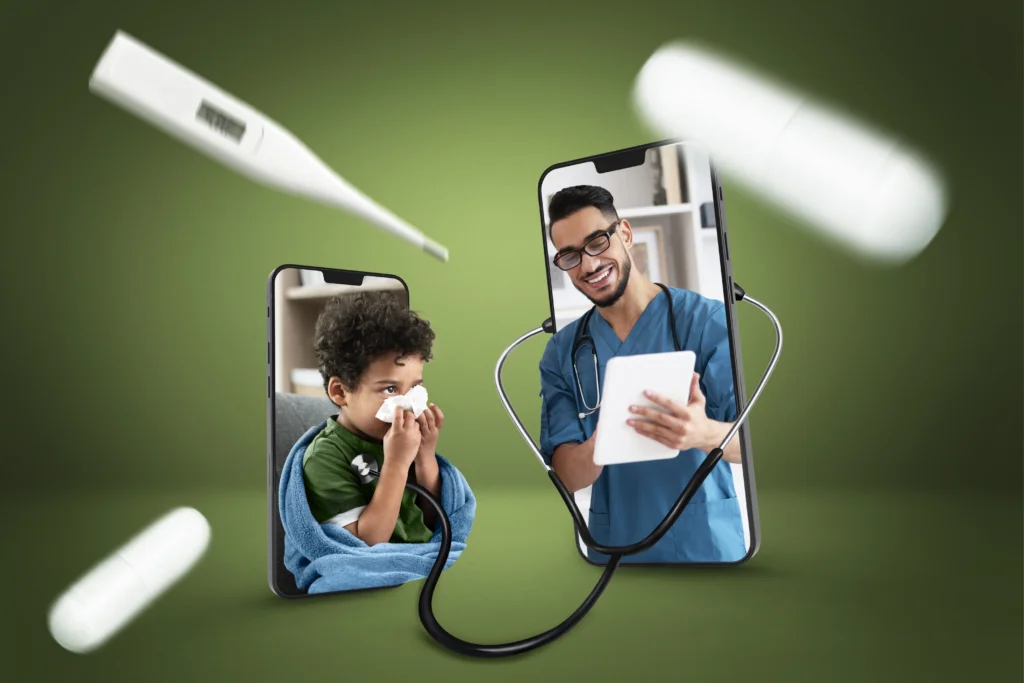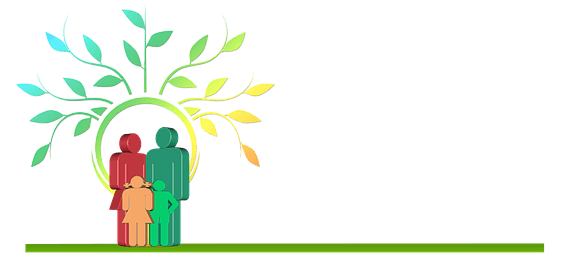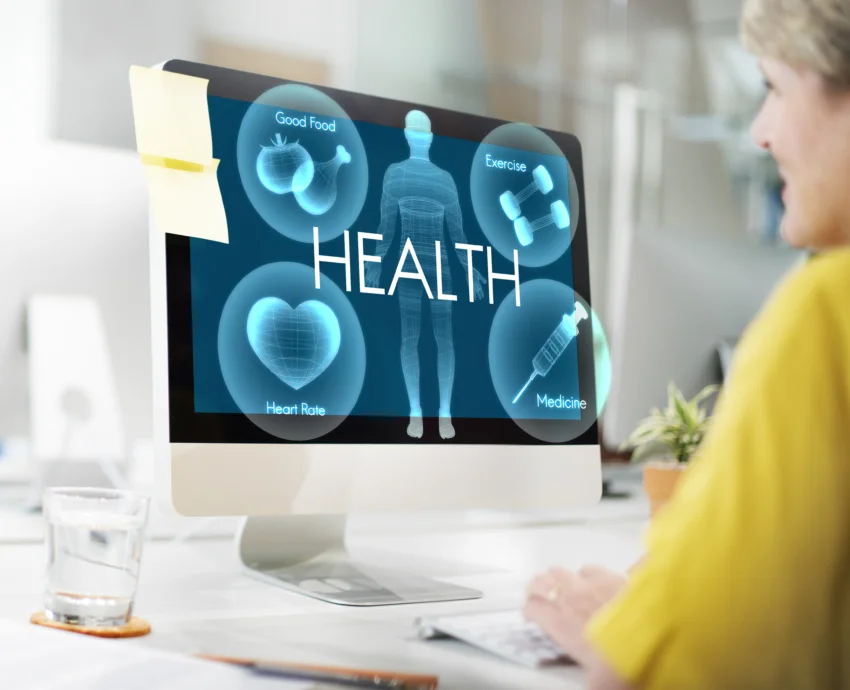Connected Health Using Digital Health Technologies
The idea of “connected health” has been more well-known in recent years as technology advancements have made it simpler to gather and share health data. It is now feasible to track different elements of health, including blood pressure, heart rate, sleep patterns, and physical activity, thanks to the development of smartphones, wearables, and other linked gadgets. This information can be utilised to spot trends and future health problems, empowering people to manage their health in a proactive manner.

What is Connected Health
“Connected Health encompassess terms such as wireless, digital, electronic, mobile, and tele-health and refers to a conceptual model for health management where devices, services or interventions are designed around the patient’s needs, and health related data is shared, in such a way that the patient can receive care in the most proactive and efficient manner possible.”[1] This new technology-enabled style of healthcare delivery is referred to as “connected health” more frequently these days.
Definition of Connected Health
CH is a general term that refers to the entire family of telemedicine. Many definitions of what CH is have been produced as a result of an expanding body of knowledge about CH and CH practises. For example,
“American Medical Association (AMA) defines CH as a model that utilizes technology to maximize health care resources and offer enhanced, flexible opportunities for patients to engage with clinicians and better self-manage their care.”[2]
“CH as a platform that offers remote monitoring and self-management, helping patients to address their own health care needs in a smart, timely, and precise manner through information and communication technologies (ICTs).”[3]
Here are three classification of CH
Remote Health Care
One of the main components of CH is remote healthcare. Studies show that aspects of remote medical care, including telecare medicine information systems, personally controlled health records systems, and patient monitoring, are included in both the theoretical concept of remote health care and the practical application of information technology systems to health care. These studies also highlight the fact that “user authentication can assure the legitimacy of patients’ care” in CH apps. Even while these definitions and their proponents may show a higher focus on how to link patients and medical professionals, remote health care-focused definitions of CH are frequently considered as a component of a new lexicon for telemedicine.’[4]
Smart Health Care
Smarter definitions of CH show how managing patients and their care is a key component of CH, in addition to health care and technology. They suggest that CH is a novel approach to health management and that it has the potential to improve care and decision-making by ensuring the right information is available at the right time. These choices “may save lives, save money, and provide a better quality of life before and after treatment,”[5]
“Connected health…refers to a conceptual model for health management where devices, services or interventions are designed around the patient’s needs”.[6] Based on this definition, CH is a patient-centered care.
site-to-site and mobile medical treatment. We divided definitions of CH into three categories—remote, smart, and precise—based on their key characteristics in order to narrow the scope of our research. Therefore, this study defines CH as a platform that allows for remote monitoring and self-management, assisting patients in meeting their own healthcare demands in a wise, timely, and effective manner.[7]
CH differs from traditional healthcare in that it gathers data quickly and seamlessly, giving practitioners greater knowledge to address patients’ specific healthcare requirements.[8] Additionally, “stakeholders in the process are connected…using timely sharing and presentation of accurate and pertinent information regarding patient status through the smarter use of data, devices, communication platforms, and people”[9]. In order to provide care in a way that is as effective and exact as possible, CH is used by patients.[10]
Connected Health Care using digital health technologies
The field of healthcare is being revolutionised by digital health, which is moving away from the traditional “one size fits all” method of managing healthcare and towards real-time, individualised monitoring and therapeutic care. Digital technologies offer the potential to increase the delivery of healthcare for individual individuals, as well as our ability to diagnose and treat diseases accurately. They also provide patients more control over their health and the ability to make better-informed decisions about it. Aside from facilitating management of chronic ailments outside of conventional health care settings, the concept also provides several chances to assist preventive, early diagnosis of life-threatening diseases, and prevention.[11]
Connected Health Care by Internet of Things
Applications for healthcare are supported by the Internet of Things (IoT), connected items anywhere, anytime, with anyone flawlessly using any network and any service, which result in smart health care. Networked sensors that are either embedded or worn on the body generate extensive data about the health of the subjects [6]. A good change in the health care environment may result from such information. conjunction with the new data availability. The evolution of medicine can be aided by generations’ intelligent processing techniques in three ways: (a) by qualifying personalised management and treatment alternatives, (b) by lowering healthcare costs, and (c) by improving results.[12]
Connected Health in Hypertension Management
A modern approach that relies on new technologies and considers patient self-management as a means to improve blood pressure control must be added to the traditional healthcare model of hypertension management, which relies on recurrent office visits, in order to effectively address the hypertension burden. In this context, digital health, also known as e-health, is an emerging subject where medical informatics, public health, and business interact in a complicated way to enable remote delivery of health services and health-related information and improve health care broadly.[13]
Why will Connected Health change our practice
Society is being compelled to completely rethink how we may use technological assistance to provide a new type of connected health care. The field of clinical research is quickly progressing in its understanding of how to use technology to create patient-centric forms of care. This field has the potential to revolutionise health and social care in the coming years, despite several important research hurdles that still need to be resolved.[14]
Conclusion-
The use of technology, such as mobile phones, wearables, and health tracking apps, to assist people in managing their health and healthcare is known as connected health. This method of providing medical care is also known as telehealth, eHealth, or digital health. Remote health monitoring is made possible by connected health, and this can result in more effective interventions, better results, and more patient satisfaction. Connected health has the power to revolutionise healthcare by empowering people to take control of their own health, enhancing access to medical treatments, and increasing public health programmes. To make sure that these technologies are created and utilised in a way that is secure, safe, and respectful of people’s privacy, it is crucial for technology developers, healthcare providers, and regulators to collaborate.
[1] Caulfield BM, and Donnelly SC. What is connected health and why will it change your practice? QJM. (2013) 106:703–707. https://doi.org/10.1093/qjmed/hct114 Retrieved on 8thApril 2023.
[2] Rheuban K, Shanahan C, Willson K. Telemedicine: Innovation has outpaced policy. Virtual Mentor 2014 Dec 01;16(12):1002-1009 [FREE Full text [doi: 10.1001/virtualmentor.2014.16.12.pfor1-1412] [Medline: 25493370]
[3] Sonia Chien-I Chen1, Ridong Hu, Rodney McAdam, Smart, Remote, and Targeted Health Care Facilitation Through Connected Health, (J Med Internet Res 2020;22(4):e14201) doi: 10.2196/14201 https://pdfs.semanticscholar.org/Retrieved on 10th April 2023.
[4] Sonia Chien-I Chen1, Ridong Hu, Rodney McAdam, Smart, Remote, and Targeted Health Care Facilitation Through Connected Health, (J Med Internet Res 2020;22(4):e14201) doi: 10.2196/14201 https://pdfs.semanticscholar.org/Retrieved on 10th April 2023.
[5] Id
[6] Burke LE, Ma J, Azar KM, Bennett GG, Peterson ED, Zheng Y, et al. Current science on consumer use of mobile health for cardiovascular disease prevention. Circulation 2015 Sep 22;132(12):1157-1213. [doi: 10.1161/CIR.0000000000000232]
[7] Sonia Chien-I Chen1, Ridong Hu, Rodney McAdam, Smart, Remote, and Targeted Health Care Facilitation Through Connected Health, (J Med Internet Res 2020;22(4):e14201) doi: 10.2196/14201 https://pdfs.semanticscholar.org/Retrieved on 10th April 2023.
[8] Eysenbach G. What is e-health? J Med Internet Res 2001;3(2):E20 [FREE Full text] [doi: 10.2196/jmir.3.2.e20] [Medline: 11720962]
[9] Brandenburger A, Stuart J. Value‐based business strategy. J Econ Manag Strategy 1996;5(1):5-24 [FREE Full text] [doi: 10.1111/j.1430-9134.1996.00005.x]
[10] Sonia Chien-I Chen1, Ridong Hu, Rodney McAdam, Smart, Remote, and Targeted Health Care Facilitation Through Connected Health, (J Med Internet Res 2020;22(4):e14201) doi: 10.2196/14201 https://pdfs.semanticscholar.org/Retrieved on 10th April 2023.
[11] Atheer Awad a 1, Sarah J. Trenfield a 1, Thomas D. Pollard a, Jun Jie Ong a, Moe Elbadawi a, Laura E. McCoubrey a, Alvaro Goyanes a b c, Simon Gaisford a b, Abdul W. Basit a b
Advanced Drug Delivery Reviews (2021) 178, https://doi.org/10.1016/j.addr.2021.113958 Retrieved on 4th April 2023.
[12] Dey, N., Ashour, A. S., & Bhatt, C. (2017). . Internet of Things and Big Data Technologies for Next Generation Healthcare, 3–12. https://link.springer.com /:10.1007/978-3-319-49736-5_1 Retrieved on 4th April 2023.
[13] Omboni Stefano Connected Health in Hypertension Management
Front. Cardiovasc. Med., 13 June 2019 Sec. Cardiovascular Epidemiology and Prevention Volume 6 – 2019 | https://doi.org/10.3389/fcvm.2019.00076 Retrieved on 4th April 2023.
[14] Caulfield BM, and Donnelly SC. What is connected health and why will it change your practice? QJM. (2013) 106:703–707. https://doi.org/10.1093/qjmed/hct114 Retrieved on 8thApril 2023.

